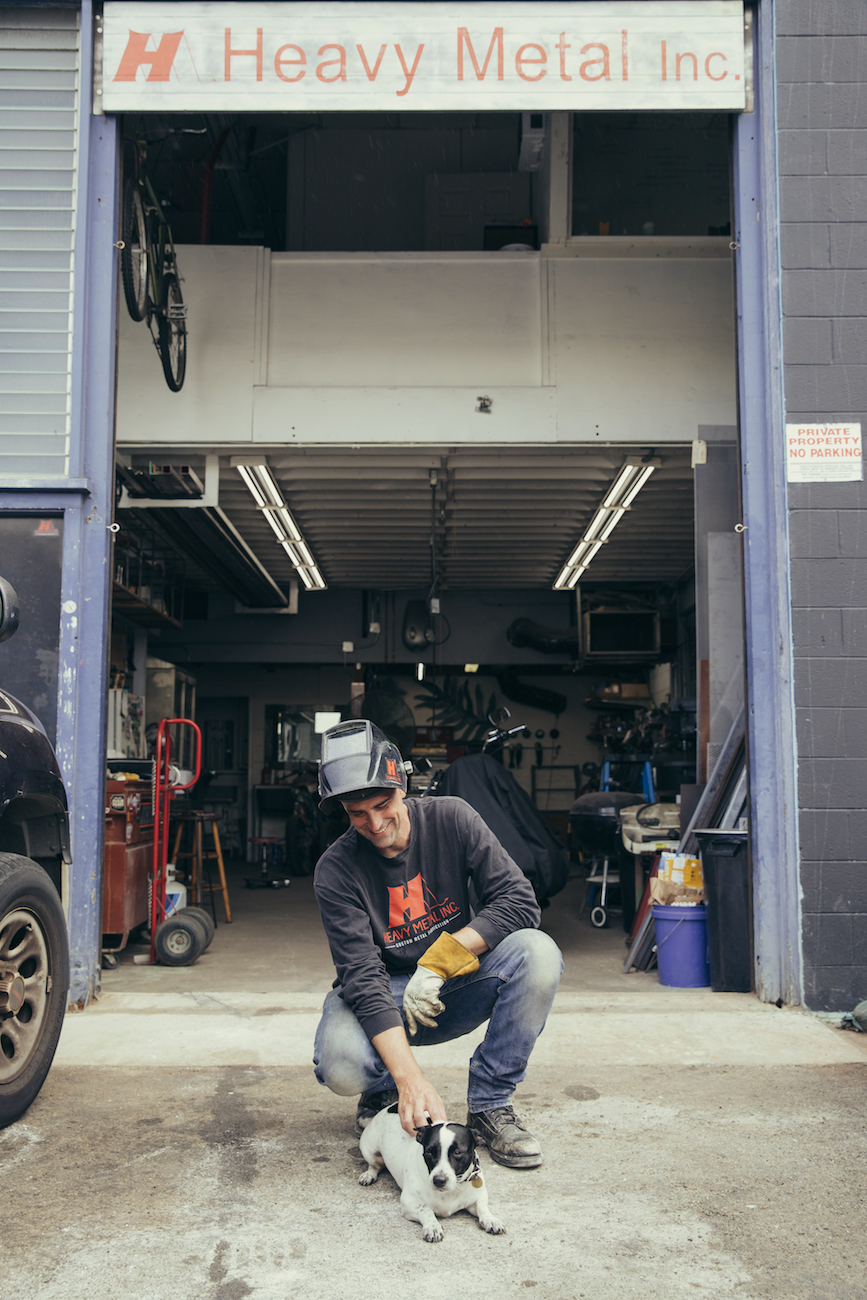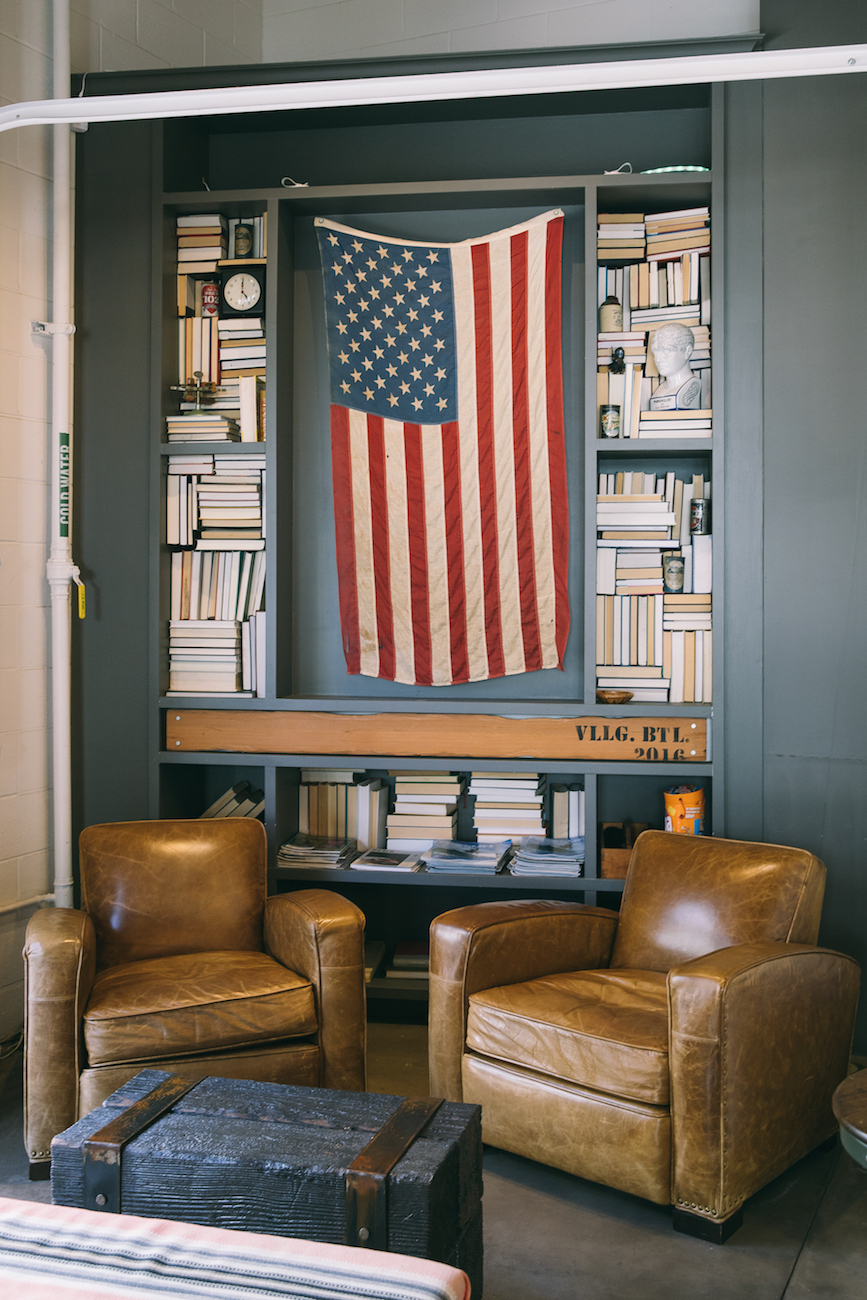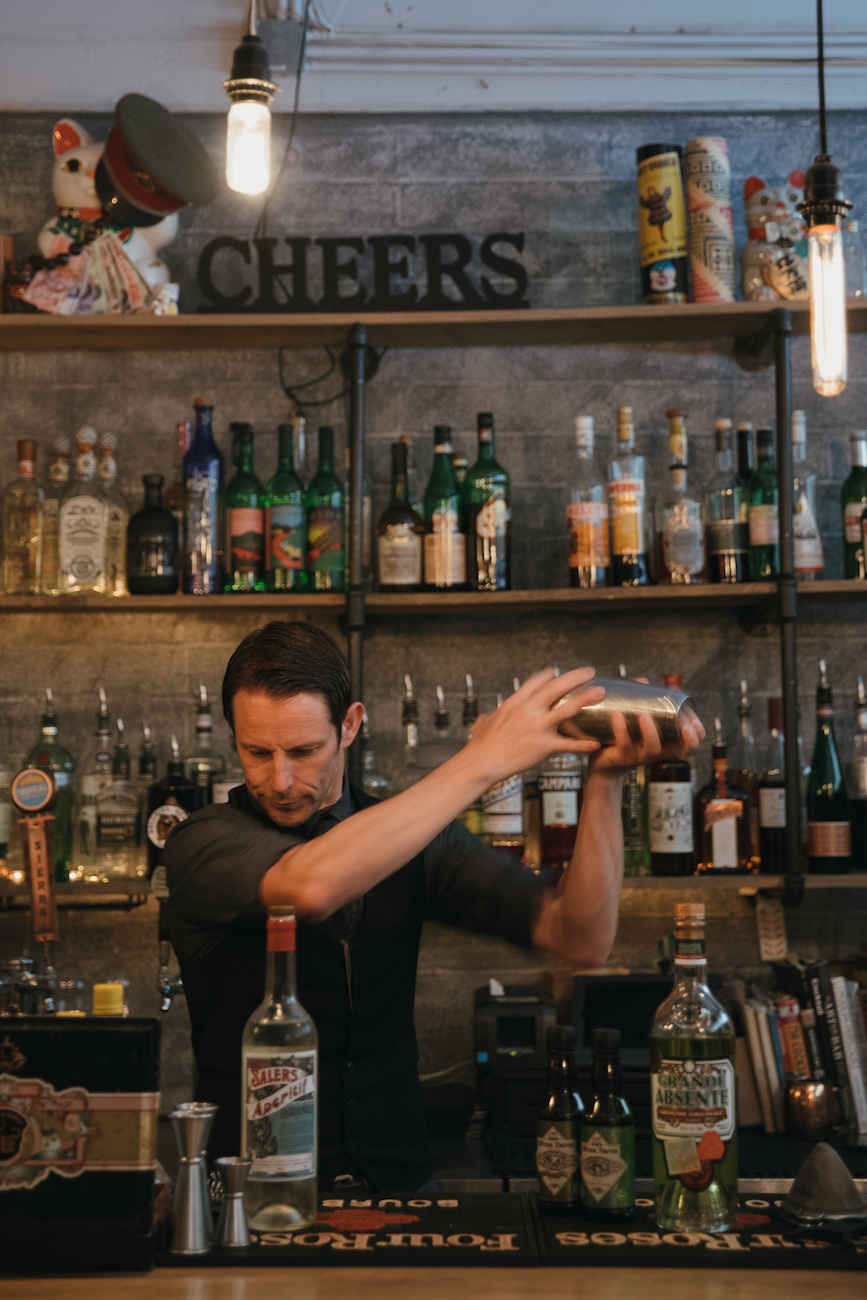Images by Kainoa Reponte & IJfke ridgley
Living, working, and walking in the growing neighborhood of Kaka‘ako reveals the energy found in the local community.
I never understood the benefit of the whole walkability thing until I lived in a neighborhood that was actually walkable. I grew up in the hilly suburb of ‘Aiea Heights, where steep inclines were great for working out calf muscles, but much less so for playing ball with friends, trick-or-treating, or attempting to ride anything on wheels. In ‘Aiea, the car was your ticket out.
I moved to Kaka‘ako in November 2017 after buying—with the help of my parents—a two-bedroom, two-bath unit at 801 South Street, a workforce housing condominium that sits near the site of the former Honolulu Advertiser building.
With a walk score of 91 out of 100, Kaka‘ako is the second most walkable city on O‘ahu, according to Walk Score, a site that measures the value of a particular neighborhood based on its proximity to nearby amenities.
From where I live, it takes a mellow 20 minutes on foot to get to Chinatown, where I work, a stroll that helps get my blood and brain pumping. (I even outlined half this article in my head on a walk home one day.)
Ala Moana Center and the movie theater at Ward Village are also a quick walk or Biki ride away. An evening dog-walking routine with my 6-year-old bichon frise, Luffy, often involves a romp through Mother Waldron Neighborhood Park, a stop at Bill Reardon’s Heavy Metal Hawaii shop to visit with his dog, Buddy, and dinner outside at one of our favorite spots: Pioneer Saloon or Down to Earth.
Though I am a recent addition to the neighborhood, I have closely watched Kaka‘ako grow over the past five years.
Between 2013 and 2016, my company, Nella Media Group, worked with Kamehameha Schools to publish Foundry, a quarterly journal that documented the burgeoning community they were building.
Helmed by Christian O’Connor, Kamehameha Schools’ former senior asset manager, the development of Kaka‘ako was intended to create a gathering place for what developers deemed the “digital explorer.” Its scrappy start fomented businesses that were experimental and exciting.
There was Mark Noguchi’s Taste Table, which featured rotating pop-up restaurants like Onda Pasta, Miso and Ale, and The Pig and the Lady. This is where I first remember being blown away by Wade Ueoka’s mochi-crusted snapper over somen noodles, a dish that would later become popular at his fine-dining establishment, MW Restaurant. There was art organization Interisland Terminal’s R&D bookstore, a welcome sight after the island-wide closure of Borders Books and Music locations, where you could enjoy a cappuccino from Morning Glass Coffee while browsing a finely curated selection of books, magazines, and art.
There were the parklets, built beautifully by Ian Eichelberger—the first to have been approved by the city—that took over the parking stalls fronting the old location of Hank’s Haute Dogs.
There was also Paiko, which made tropical florals a thing before they became a trending hashtag around the world. Then Bevy arrived next door, turning the sports bar Scores, known for its cheap shots and dartboards, into a refuge for lovers of craft cocktails lit warmly by Edison bulbs, before Edison bulbs outfitted restaurants near and far.
Christian Self says that since he opened Bevy in 2013, the most rewarding aspect of working in Kaka‘ako has been being surrounded by like-minded people, “people who are trying to break from conformity and who have a similar artistic approach to how they do things.” Both Paiko and Bevy remain neighborhood mainstays.
“Kaka‘ako was something the city needed, which is an interesting urban community that’s walkable, youthful, vibrant.”
Although there was a spirited energy that permeated Kaka‘ako and bonded these early pioneers, there were fears about the future, too. Plots of land were sold to residential developers like Alexander and Baldwin, Castle and Cooke, and Stanford Carr, leading to whispers about if Kamehameha Schools’ master plan would take into account the needs of Hawai‘i families or instead give priority to overseas luxury buyers.
Residents also questioned the capacity of the area’s sewage system and speculated that old pipes would be overwhelmed by the increase of residents. (The lingering smell of sewage only exacerbated these fears.) Business owners displaced after being in the area for decades protested being kicked out.
Owners of new businesses wondered if and when they too would be forced to leave, if commercial rental prices would suddenly be raised to a level they could no longer afford.

All too often, the big, bad G-word, gentrification, was thrown around. “But people gotta remember,” says Shawn Boyd, who ran The Greenhouse Innovation Hub, a co-working space for Hawai‘i’s tech community, in Kaka‘ako from 2011 to 2013, “knocking down a building does not gentrification make. There’s a stigma with the word gentrification, that it’s the idea of moving people out. But who lived at Comp USA, who lived at the newspaper [building], the Eat the Street parking lot?”
Growing up, Boyd’s parents ran Video Life, an electronics store in Coral Community Plaza on Auahi Street, so he has seen the change that the neighborhood has gone through over the last 20 years. He and his friends used to call the area “Cracka‘ako” because of the vagrants who roamed the streets. He remembers finding his parents’ company van broken into and littered with drug needles, the empty boxes from big screen TVs stolen for use as shelter, he surmised.
Still, Boyd, who ended up buying a one-bedroom, one-bath unit at One Waterfront Towers in 2007, has always loved Kaka‘ako. To him, it is a place that represents the independent spirit.
“When it was ugly, we grabbed spray cans, and now those buildings with murals on them are part of the foundation of the neighborhood,” he says, referring to the rise of international street art festival Pow Wow Hawai‘i. “People didn’t take no for an answer. Kaka‘ako was a way for people to realize that we can do it ourselves.”

This resourceful spirit has been a part of Kaka‘ako’s cultural makeup since pre-contact times, when the area was a flourishing center for pa‘akai, or salt production. After contact, the process was commercialized and much of the salt was exported to the Pacific Northwest.
Even after the decline of salt production in the 1880s, Kaka‘ako remained an industrial center through the 20th century, becoming home to companies like Walker Mill, the second largest rice mill on O‘ahu; various bottling companies, including Honolulu Brewing and Malting Company, the original maker of Primo beer; Honolulu Iron Works, which manufactured machinery for the islands’ growing sugar mills; and the McFarlane Tuna Company, which canned the growing catches of fishermen that operated out of Kewalo Basin Harbor.
By the 1970s, more than 20,000 people, or about 8 percent of O‘ahu’s total labor force, were employed in the area, according to a 1979 Honolulu Magazine article by Brian Nicol. “[Kaka‘ako is] where the people gathered, because this is where you had occupations, fishing, docking, and freight,” said Louis “Buzzy” Agard, who fished in the Kaka‘ako area for 75 years, when he was interviewed for a cultural impact assessment by Cultural Surveys Hawai‘i for Kamehameha Schools. “And people just kept coming. They saw the sights, and a working community.”
This picture is not far off from what the neighborhood looks like today.
“Kaka‘ako was something the city needed, which is an interesting urban community that’s walkable, youthful, vibrant,” says Tim Golden, the co-owner of Village Bottle Shop and Tasting Room. “There’s an energy and positivity, and people are excited to be here.”
Despite growing up in and commuting from Waialua on O‘ahu’s North Shore, Golden could not pass up the opportunity to open a shop in the newly constructed Salt at Our Kaka‘ako space. He credits Honolulu Beerworks owner Geoff Seideman with paving the way for the nearly half-dozen breweries and bottle shops that have turned Kaka‘ako into a destination for beer lovers.
“Geoff took a huge leap of faith opening here,” says Golden, whose business stocks anywhere between 500 to 600 beers and features 18 beers and eight wines on tap. “Beer is a common drink that brings people together. You drink it in garages, at the beach, and Salt spoke to that. It’s a cool community of small business owners who put their [livelihoods] on the line to open something they’re passionate about.”
Similar to the resurgence of the Honolulu neighborhoods of Kaimukī and Chinatown, much of the growth in Kaka‘ako has been powered by small local businesses. “I always loved the back streets, like Sausalito in California or Roppongi in Japan, before it got developed,” says Jake Mizuno, owner of Stoke House, a surf boutique at Salt, and Milo, a lifestyle boutique that shares a space with Paiko and the popular café Arvo.
“I have been watching [Auahi Street] for 20 years, and the way this street grew, everything happened so organically. This is a store with my friends and family and a store that has a story behind it. It wasn’t manufactured.”
In addition to his career in commercial real estate, the 51-year-old was responsible for opening Roxy and Quiksilver stores across Hawai‘i. After opening nearly 30 stores in Hawai‘i, Mizuno calls his Kaka‘ako stores the best projects he has worked on. “There are so many young people stimulating my brain,” he says.
Like any growing urban area, Kaka‘ako is not without its share of issues. The beating of two Japanese tourists in the bathroom of Mother Waldron Neighborhood Park in May 2018 stoked concerns about homelessness in the area. Ironically, it was actually homeless people who were living in the park that intervened on behalf of the tourists, Honolulu Police Department Deputy Chief John McCarthy told the Honolulu Star-Advertiser, and their description of the man who committed the crime that led to the arrest of a 20-year-old from the Windward side of O‘ahu.
Residents continue to navigate a complicated relationship with homeless communities in the neighborhood.
But I feel lucky to be a part of the tribe of people who call Kaka‘ako home, a neighborhood that has grown with us, as our businesses have developed, and as we’ve started families.
Boyd points out that Eat the Street, the popular street food festival that began in Kaka‘ako in 2011, has grown from having monthly events with just a handful of food trucks to hosting festivals around the island with a rotating roster of hundreds of trucks.
“Kaka‘ako can be the internal inspiration for O‘ahu of what’s possible,” Boyd says. “It’s a source for incubation that can make the whole island become better.”







